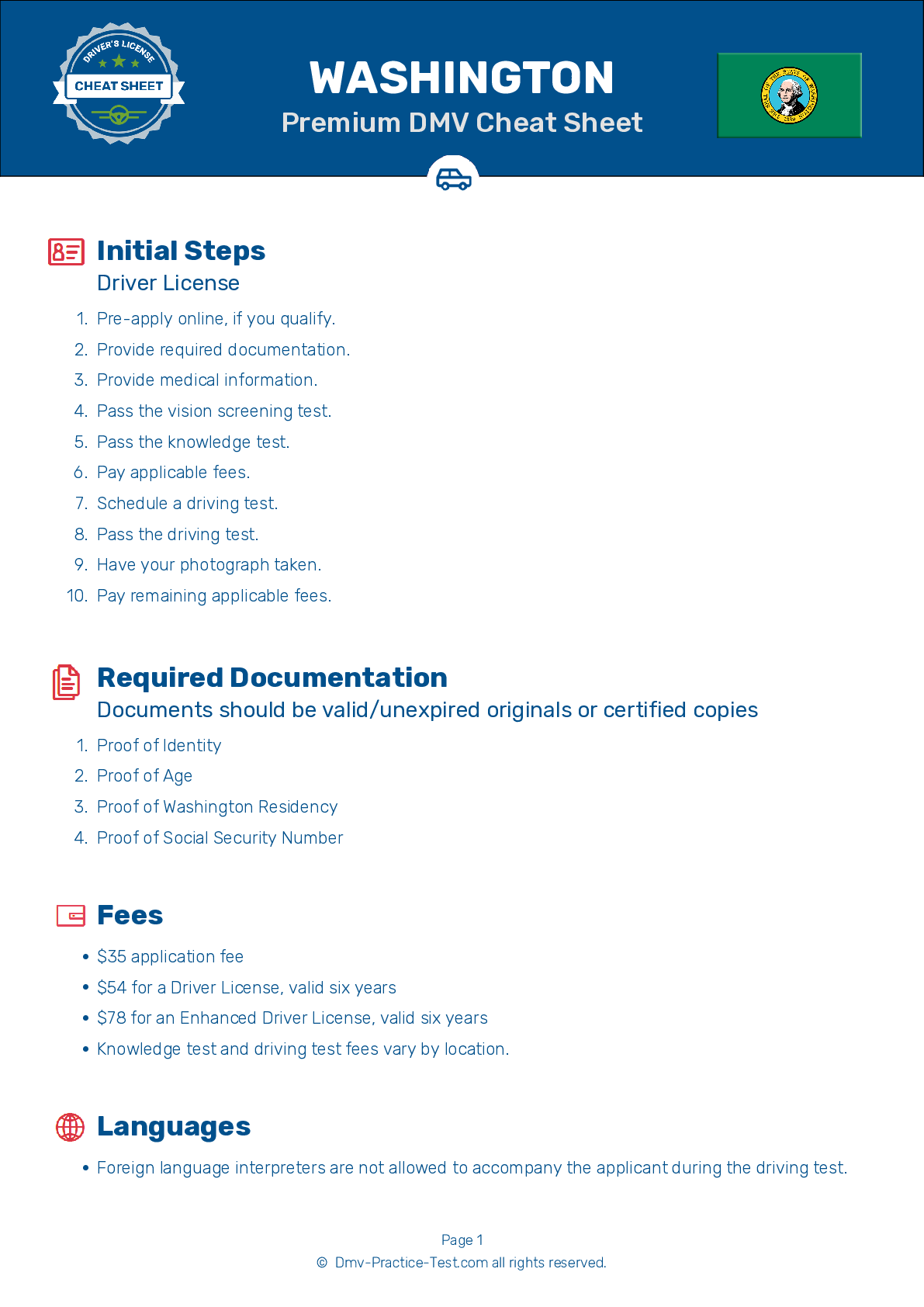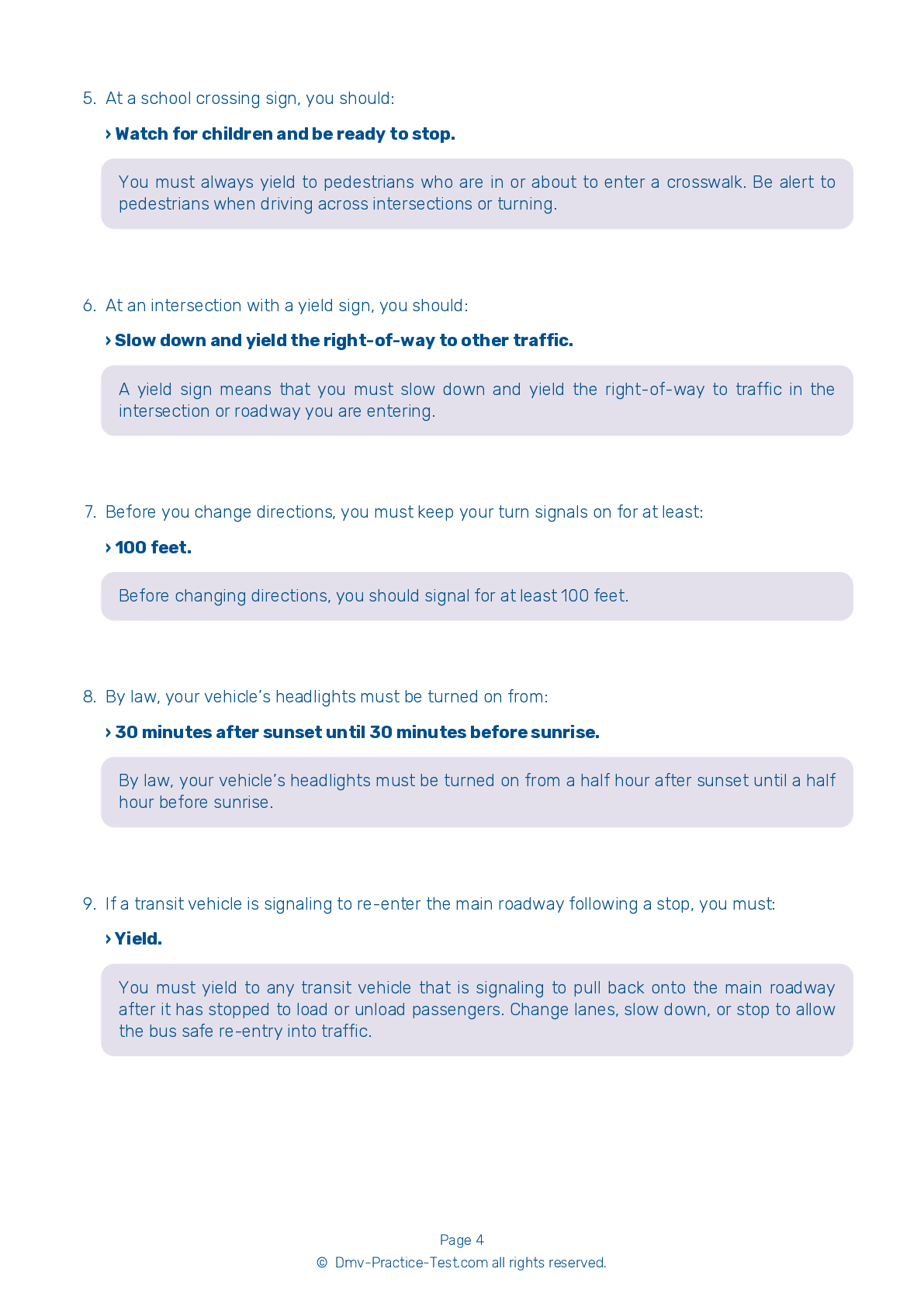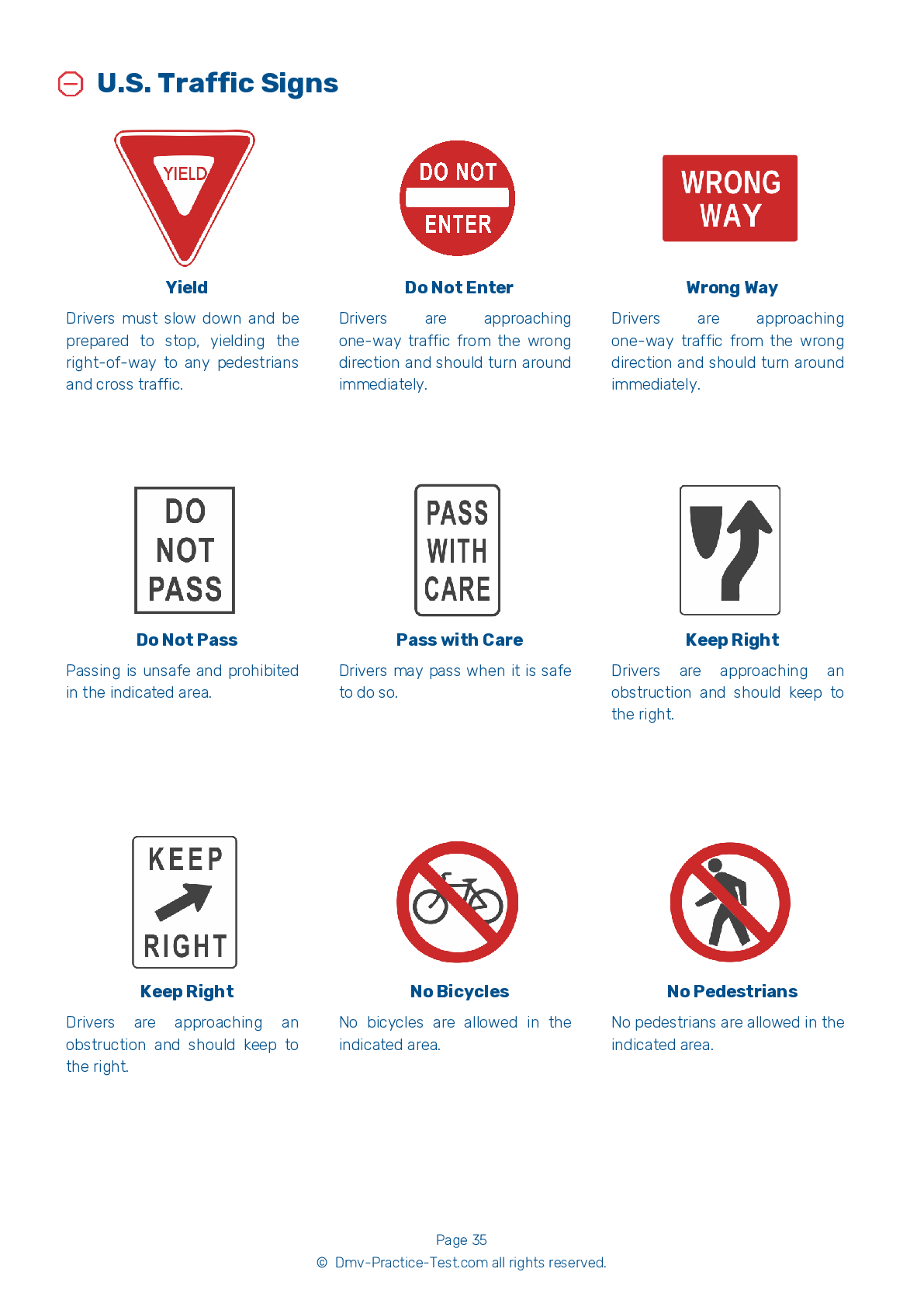FREE Washington DMV Practice Test #18 Page 4 of 4
The Washington DMV practise examinations have been updated for January 2026. It includes questions based on the Washington Driver Handbook's most significant traffic signals and legislation for 2026. Use actual questions that are very similar (often identical!) to the DMV driving permit test and driver's licence exam to study for the DMV driving permit test and driver's licence exam.
On the practise exam, each question gets a tip and explanation to help you remember the concepts. The written component of the official Washington DMV test will feature questions about traffic rules, traffic signs, and driving statutes, as well as knowledge from the Driver Handbook.
To obtain a passing grade, you must correctly answer 20 of the 25 questions. Use the practise exam provided by the Washington Department of Motor Vehicles to help you prepare for your instruction permit or driver's licence.
The DMV exam is available in several languages.
Using any kind of testing assistance will result in an automatic fail, and the DMV may take additional action against your driver's licence, so stay away from it.
19 . Railroad crossings should always be considered:
Railroad crossings are always dangerous. Drivers should always look and listen for trains approaching from either direction on all railroad tracks. Always follow the directions indicated by signs, signals, and flaggers. Never proceed past a railroad crossing until you are certain it is safe to do so.
20 . Blood alcohol content (BAC) depends on each of the following, except:
Your blood alcohol content (BAC) depends on how much alcohol you drink, how much time passes between drinks, and your weight. It is not affected by the type of alcoholic beverages you drink, your level of physical fitness, or how well you can "hold your liquor."
21 . You are coming to an intersection with a flashing yellow light. You should:
A flashing yellow light means that you should proceed through the intersection slowly and with caution. Scan your eyes across traffic in both directions.
22 . A driver can legally pass on the right side of another vehicle:
If there is an available passing lane, you may pass on the right of a vehicle or bicycle that is turning left or waiting to turn left. It is also legal to pass on the right when driving on a multilane road with two or more lanes traveling in the same direction. You may never drive off the pavement or main-traveled portion of the road to pass another vehicle.
23 . The most important thing to remember about speed management and curves is that you must:
The most important thing to remember about driving in curves is that your vehicle’s inertia may make it difficult to turn. To maintain control, it is essential that you slow down before entering the curve.
24 . Drivers must yield to a pedestrian:
Drivers must always yield to pedestrians in the street, even if they are crossing against a red light or are otherwise being careless.
25 . To be parked legally on a street, a vehicle must be within:
When parking on a street, it is prohibited to park more than 12 inches from a curb.
See the exact questions that will be on the 2026 Washington DMV exam.
99.2% of people who use the cheat sheet pass the FIRST TIME
LT gives us an insight on how the cheat sheet provided her with all the study questions she needed before taking her test.
Joe initially studied with the handbook and failed his test, he eventually found us online, studied and pass his test the first time around.
2026 Washington | Frequently Asked Questions
1. Complete a driver education course if you're under 15 ½.
2. Visit a driver licensing office.
3. Provide proof of identity, Social Security number, and residence.
4. Pass the knowledge test.
5. Pay the required fee.
6. If you're under 18, a parent or guardian must sign the application.
Remember, with a permit, you must always have an adult 21 years or older in the car with you.
1. Not checking mirrors and blind spots.
2. Incorrect signaling or forgetting to signal.
3. Lack of steering control.
4. Improper lane positioning and changing.
5. Not following traffic signs or signals.
6. Inadequate observation at intersections.
7. Speeding or driving too slowly.
8. Failing to yield the right of way where necessary.
Remember, practice is key to overcoming these errors.



